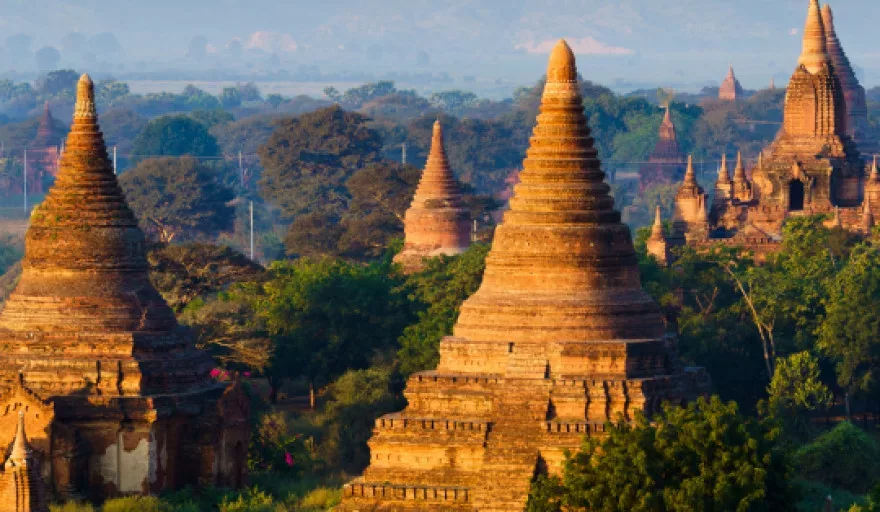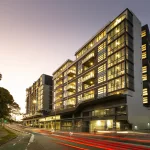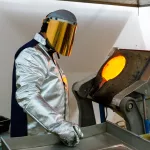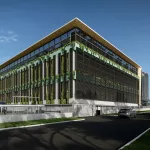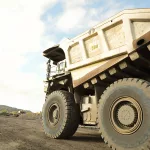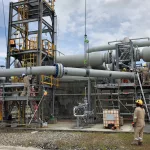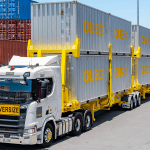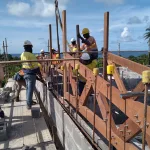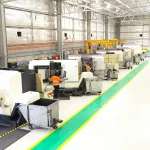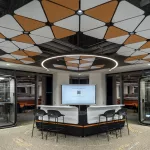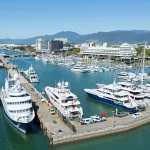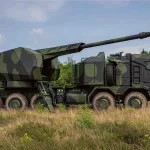The leading tourism association in Myanmar opens with the greeting: ‘Let the journey begin’; an apt message not only for the increasing swells of people visiting the country’s shores each year, but indeed for the nation as a whole as it strives to bring its infrastructural development up to the same spellbinding standards as its natural beauty.
MYANMAR
Situated in Southeast Asia on the borders of Bangladesh, India, China, Laos and Thailand, for the past few decades, Myanmar – or Burma as it is sometimes known – has remained one of the biggest hidden secrets in the world. Dictated by political, social and religious conflict, its intentional blockade to the rest of the planet left many questions unanswered.
However, since 2011 and a subsequent easing of tensions – although some aforementioned problems are still evident – the views that have greeted curious visitors and tourists have instantaneously made the country one of the most attractive destinations around the globe.
What exists now is a natural aesthetic appeal that trumps pretty much anything in its wake, and an economic, infrastructural development strategy that promises to catch up to the rest of the world at an increasingly rapid rate in the years to come.
Among its 14 states, 67 districts, 330 townships and more than 68,000 villages a balance is being formed, and thanks to the natural preservation of a landscape largely untouched by industrial evolution up to this point, business travellers can look forward to historical and natural perfection as well as more frequent economic opportunities as the development unfolds.
FACTS AND FIGURES
Capital: Naypyidaw
Languages: Burmese
Area: 676,000 kilometres
Population (2014): 51 million
GDP (2016): $74 billion
Currency: Kyat
Time zone: UTC+6.5
Dialling code: +95
Internet TLD: .mm
THE BUSINESS END
Inevitably, years of financial stagnation and isolation from the surrounding communities has made Myanmar one of the poorest nations in the region, with the country understandably having to start almost from scratch upon its reinvention in 2011. What this epiphany has allowed though, is a fast-track to the most modern and forward thinking of solutions across all industries as the strategy comes to fruition.
This will take time of course, and the primary industry in Myanmar remains rooted in agriculture – and the production of rice in particular – but there are already signs that areas of technology, manufacturing, finance and foreign direct investment are gaining traction.
Eased sanctions from the US and EU have aided this progression on a wider scale, and have been compounded more locally by the palpable interest in investments emanating from neighbours; China, Singapore, the Philippines, South Korea, India and Thailand.
Looser border controls have ‘helped me to help you’ in this respect and thus, the industrial revolution is in full -albeit embryonic – swing.
In turn, the country’s facilitation of visitors has been one of the first facets overhauled and Myanmar’s hospitality sector is now right up there with the best that the tourist-hub of Southeast Asia can offer.
Gandamar Myaing Hotel, Taw Win Garden Hotel and Summit Parkview Yangon Hotel are all prime examples of this new wave of independent chain stamping their mark on the nation’s hotel domain; adding a touch of comfort to the wealth of organic beauty already available.
TRANSPORT LINKS
One area still in need of development despite the progress made so far is across Myanmar’s transport sector. While developments are taking place – roads are smoother and access restrictions have slackened – there are still a lot of challenges to overcome both in getting to the country, and then in travelling around it.
Initially, an advanced visa is required to cross its borders for a duration no longer than 28 days and the journey is almost certain to include a transfer point somewhere nearer to the crossing. Bangkok, Singapore, Hong Kong, Seoul and Doha offer such a service at the back end, while most major international airports now serve as a departure hub when embarking.
It’s the internal logistics of the nation that prove more difficult however, so it’s advised that you arrange your travel plans and overall itinerary well in advance of arrival.
In theory, rail would be the most impressive and appealing mode of transport across the diverse terrain, but its archaic – and to be honest, corroding – network and trains force your hand in deciding between either comfort or views.
Slightly ahead of the rail evolution is the road network, which is further down the line in meeting required standards. Again, cherry picking is essential in regards to route as well as the bus/car of choice, but road travel is potentially a more rewarding option than the rickety rails.
A curveball option could also be the large river ferry network. While perhaps more geared up for the backpacker tourist rather than the boardroom executive, if you’re lucky enough to have a business meeting the other side of a reputed river ferry route, then you’d be silly not to take advantage of the opportunity.
OUT AND ABOUT
Once you’ve negotiated your route, you can sit back in awe at the sights that await you. Strongly influenced by religion and its significance through Myanmar’s history; both Buddhist and Bamar culture is evident not only throughout the numerous landmarks and buildings, but also now from a cultural perspective via its cuisine, art, theatre and music.
Due to security reasons, not all areas of the country are available to the outside world, but leading cities Naypyidaw, Yangon and Mandalay – as well as the routes in between – offer more than enough of an insight into what the state can offer.
In each locale, the community is dominated by the central monastery to bring a traditional core to the developments going on, on the periphery.
Other iconic destinations include Bagan, Mandalay Palace, Inle Lake, numerous beaches and Shwedagon Pagoda, opening the door to a host of specialist tour operators now thriving up and down the country.
Silk Road to Asia, K&H Travels, Asian Cherry Travel and Diethelm Travel Group are just a select few of these local experts ready and waiting to show you the best of Myanmar, forging a path that will also take visitors past a cultural scene thriving off the back of enhanced economic nous.
The local cuisine embraces the strong rise in industry, complemented by influences from China and India also. Seafood is a regular favourite, and while similarly local beverages are a good option, it is strongly advised not to drink any tap water.
On the art scene, ‘Burmese contemporary’ adds a pleasant spin to the existing historical landscape to once again affirm the cities’ and towns’ eclectic development.
OUTLOOK RECOMMENDS
“The creed Myanmar lives by is heart-felt goodwill towards friends and strangers alike” – Myanmar.travel
Airlines
Bangkok Airways
Soon to be celebrating its 50th anniversary, the acclaimed airline has long facilitated the global population’s ability to ‘discover Thailand’. As the country’s first private aviation Company, its reputation now precedes itself across the wider region, capitalising on the tourism influx enjoyed by much of Southeast Asia, including Myanmar.
FMI Air
Driven by a vision to be a premier regional airline, FMI Air’s rapid rise to prominence over the past four years culminated in 2015 following the launch of its own operations, an all-jet fleet of CRJ 200 aircraft and an enhanced network beyond its original Yangon-Nay Pyi Taw route.
Travel & Tourism
Making “your dream trip happen”, not many companies can claim to have harnessed the potential of Myanmar from a tourism perspective better than Silk Road to Asia. Describing the country as a “new”, not “alien” world, the business offers top-notch travel services, tailor-made tour packages and travel arrangements for visitors from all walks of life.
K&H Travels
Based in Yangon, K&H Travels’ “devoted, highly motivated and proficiently trained staff” serve as a portal to numerous leisure activities, excursions and trekking tours.
Asian Cherry Travel
Operated under the Cherry Yoma Tour banner, the approved tourism operator, Asian Cherry Travels is 100 percent Myanmar-owned. Styling itself on the newness evident in the country itself, the enthusiasm experienced with the Company has made it a go-to provider, with a whole host of package tours in tow, to make visitors’ trips worthwhile.
With offices in Bhutan, Cambodia, China, Hong Kong, Laos, Malaysia, Maldives, Singapore, Sri Lanka, Thailand and Vietnam – as well as in Myanmar – Diethelm Travel Group is among the most knowledgeable tour operators and travel advisors in the region, lending its extensive experience to a Burmese tourism industry in search of refined quality and processes.
Hospitality
Gandamar Myaing Hotel
The Pyin Oo Lwin-based hotel is a perfect example of the transition that Myanmar is enjoying at present, capturing the natural aesthetics of its surroundings to make it an appealing choice to reside in on your travels, while offering an affordability and humbleness so not to detract from the traditional feel of the area.
Further along the transition scale is Taw Win Garden Hotel, perhaps a sign of prowess to come for Myanmar’s hospitality sector. The stunning four-star hotel is geared up primarily for business travellers in the vicinity of Yangon.
More central still, in the heart of Yangon, Summit Parkview Yangon Hotel embraces the best of local culture, music and cuisine, and has become an instant favourite in the city for visitors of all kinds.
Leisure and Relaxation
Sapel Traditional Burmese Foot Spa
LANDMARK ATTRACTIONS
Bagan
“A trip of a lifetime: Bagan is one of the world’s greatest archaeological sites, a sight to rival Machu Picchu or Angkor Wat. The setting is sublime – a verdant 26 square-mile plain, part-covered in stands of palm and tamarind caught in a bend of the lazy-flowing Irrawaddy (Ayeyarwady) river and framed by the hazy silver-grey of distant mountains.” – The Telegraph
Mandalay Palace
“Mandalay Palace was the first palace to be built in Mandalay, by King Mindon when he shifted his capital from Amarapura in 1861, to fulfill an old prophecy. The magnificent palace was built of teak wood on raised brick plinth gilded with gold and vermilion. The artistic workmanship and handicrafts depicting the glory of the golden age of the days gone by is still amazing, awe inspiring and the beholder will be spell bound with wonder.” – myanmartravelinfornation.com
Inle lake
“The Inle Lake region is one of Myanmar’s most anticipated destinations and all the hype is justified. Picture a vast, serene lake – 13.5 miles long and seven miles wide – fringed by marshes and floating gardens, where stilt-house villages and Buddhist temples rise above the water, and Intha fisherfolk propel their boats along via their unique technique of leg-rowing.” – Lonely Planet
Shwedagon Pagoda
“No visit to the Union of Myanmar is complete without a visit to the 2,500 year-old Shwedagon Pagoda, which enshrines strands of Buddha’s hair and other holy relics. From a humble beginning of 8.2 meters, the Shwedagon Pagoda today stands close to 110 meters. Shwedagon Pagoda is covered with hundreds of gold plates and the top of the stupa is encrusted with 4,531 diamonds. To understand this monumental work of art and architecture, visitors will experience an insider’s view of this magnificent symbol of Buddhism to the lives of the Myanmar people.” – shwedagonpagoda.com

